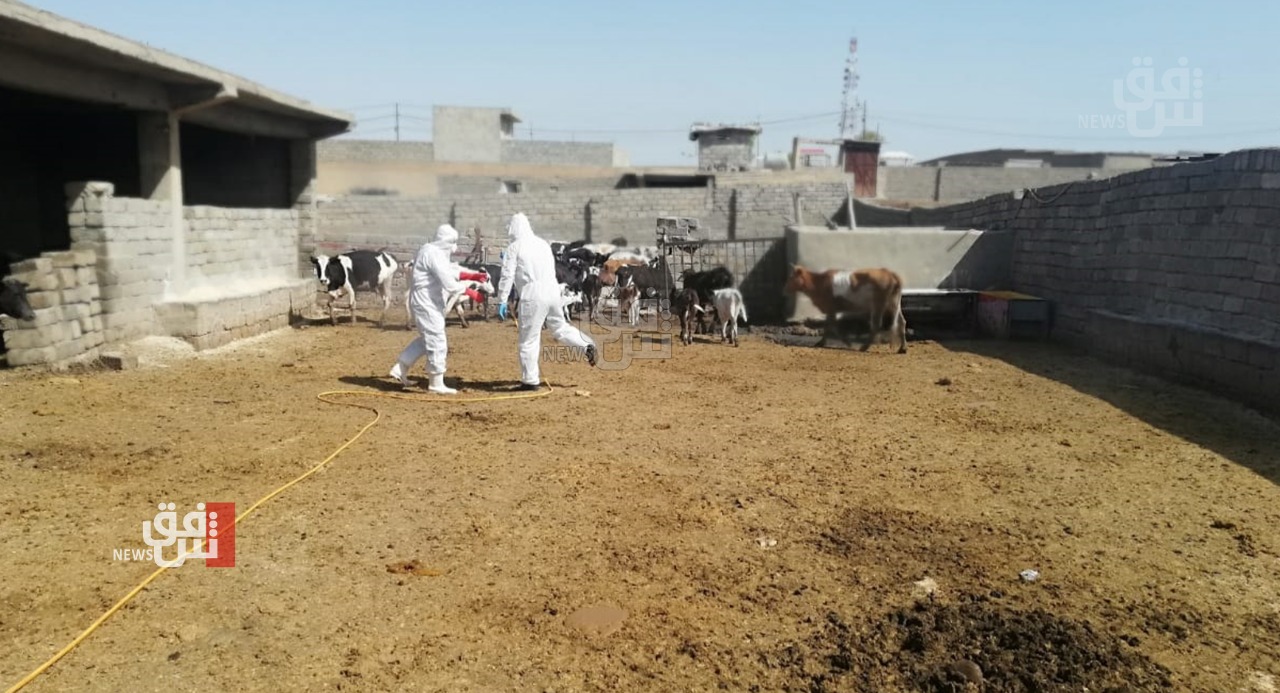Duhok records first Hemorrhagic Fever death of 2024 in Iraq

Shafaq News/ Duhok Governorate has reported its first death from Hemorrhagic Fever in 2024, a source from the Governorate Health Department confirmed on Wednesday.
The victim, a 48-year-old man, had initially visited Duhok Hospital over two weeks ago.
"Medical tests confirmed his hemorrhagic fever diagnosis, and he subsequently passed away in a hospital in Erbil." The source said.
Additionally, a 65-year-old woman has been diagnosed with hemorrhagic fever, though her condition is currently stable.
Earlier on Wednesday, Kurdistan Regional Health Minister Saman Barzanji announced the first cases of cholera and hemorrhagic fever in 2024 during a joint press conference with Begard Shukrallah, the Minister of Agriculture and Water Resources.
Minister Barzanji reported that approximately 50 cases of Hemorrhagic Fever have been recorded across Iraq, with eight fatalities.
In the Kurdistan Region, two cases have been confirmed, including the recent death in Duhok.
Viral hemorrhagic fevers (VHFs) are a group of diseases caused by several distinct families of viruses. The term refers to conditions where many of the body's organ systems are affected, the cardiovascular system is damaged, and the body's ability to function independently is reduced.
These viral infections are not limited to a single mode of transmission. They can spread in numerous ways, including through insect bites and contact with the body fluids of infected people or animals.
Viral hemorrhagic fever (VHF) symptoms vary depending on the specific disease. Early in the illness, they often include fever, body aches, dizziness, extreme tiredness (fatigue), headache, and rash.
In severe cases, VHFs can also cause bleeding from the nose, eyes, gums, or vagina, severe vomiting or diarrhea, vomiting blood, bloody diarrhea, chest, neck, or stomach pain, difficulty breathing, extremely low blood pressure, seizures, and coma.
In Iraq, Crimean-Congo hemorrhagic fever (CCHF) is the most common type.
According to the WHO, Iraq is among the eastern Mediterranean countries where Crimean-Congo Hemorrhagic Fever (CCHF) is endemic.
WHO pointed out that sheep and cattle husbandry are prevalent in Iraq, and studies indicate that these animals are frequently infested with ticks, primarily Hylomma species, which serve as the primary vectors for CCHF transmission.
On the other hand, Basim Al-Gharabi, a member of the Parliamentary Health Committee, explained to Shafaq News Agency that the rise in human cases of hemorrhagic fever is linked to temperature fluctuations.
Al-Gharabi explained that "the tick, which carries hemorrhagic fever, goes dormant in winter and becomes active in summer. This leads to cases being reported during this time each season, with an increase higher than usual for the past two years," attributing the disease's activity to "grazing and random animal keeping in the streets, necessitating an awareness campaign and therapeutic measures by the Iraqi Ministry of Health, which has comprehensive information about hemorrhagic fever. The treatment protocol is available, and ticks are eradicated through pesticides, as well as washing and dipping of sheep and other preventive measures."






